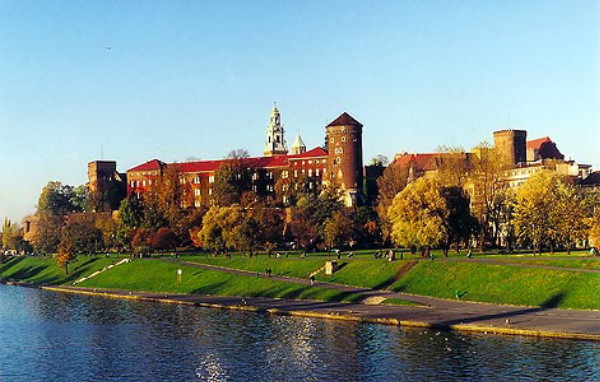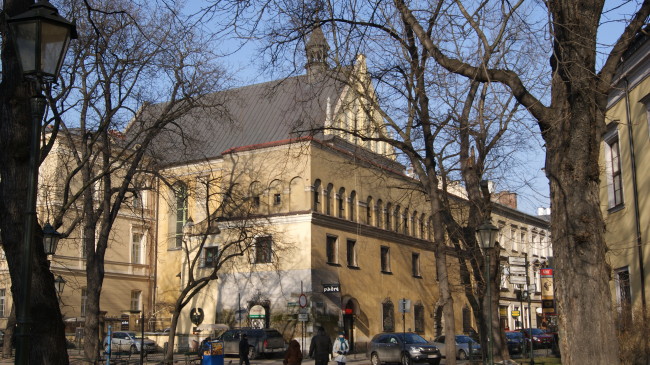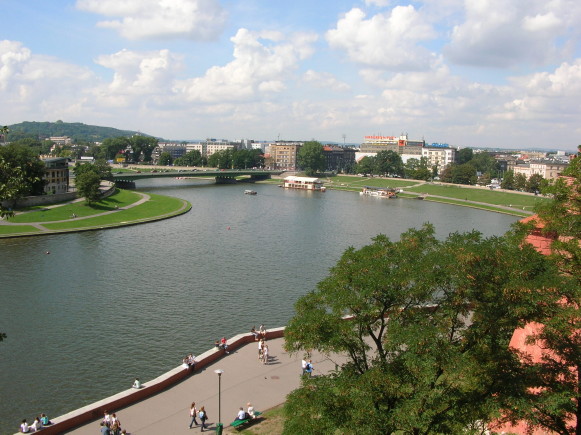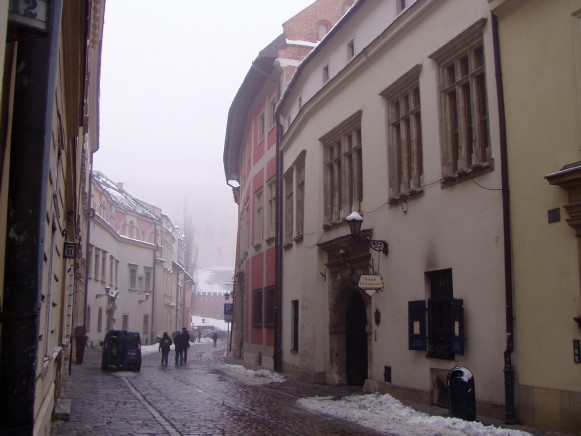Cracow
Cracow (Polish: Kraków). See Google Map. One of the largest (2021 pop 800,653) and oldest cities of Poland, located in southwestern Poland on the Vistula River. It is an important cultural center. In the 11th–13th century Cracow was one of the two principal cities of Poland (Gniezno was the other). From 1320 to 1609 it was the capital of Poland and one of the largest cities of Central Europe.
In the Princely era Cracow's ties with Ukraine were irregular and mostly commercial: an important trade route from Kyiv to Prague and southern Germany ran through the city. Relations with Ukraine became closer in the second half of the 14th century when Cracow became the capital of Poland, which encompassed a part of Ukrainian territory. Under the Jagiellon dynasty Ukrainians served at the royal court, and Ukrainian students studied at Cracow University (beginning in 1364). One of the university's professors was Yurii Drohobych (from 1488), and the first printed Ukrainian book appeared in Cracow from the press of Schweipolt Fiol in 1491. At the end of the 18th century a Greek Catholic parish was established in Cracow, and in 1808 the parish was given the Church of Saint Norbert. The Ukrainian colony grew in the second half of the 19th century, when Cracow was under Austrian rule. By the 1910s there were about 1,500 Ukrainians in Cracow, and in the 1930s about 2,000, some of whom were Polonized. Students and soldiers were transitory elements. The Ukrainians of Cracow were organized around the church and the Prosvita society, founded in 1894. Ukrainian students, numbering 60 in 1888, 200 in 1911, 100 in 1924, and 500 in 1930, belonged to the Ukrainian students' hromada (1924–39). In the 19th century the following Ukrainians lectured at the university in the department of theology: F. Kudrevych, L. Lavrysevych, and O. Cherliunchakevych, all of whom were also Greek Catholic parish priests. In the period between the two world wars there were several Ukrainian professors at Cracow University: Bohdan Lepky, who held the Chair of Ukrainian literature, Ivan Zilynsky, who held the Chair of Ukrainian language, Stepan Tomashivsky (history), Volodymyr Kubijovyč (geography), and Yurii Paneiko (law). Ivan Feshchenko-Chopivsky taught at the Mining Academy.
In 1939–41 Cracow was an important center for Ukrainian émigrés who had fled from Galicia after the Soviet occupation. There were over 3,000 Ukrainians in the city at the time. Because Cracow became the residence of the German governor general after the Nazi occupation of Poland, the Ukrainian Central Committee (the official central representative of Ukrainian organizations in the Generalgouvernement) and the Ukrainske Vydavnytstvo (Cracow) publishers were located in Cracow in 1940–4 and published, among others, Krakivs’ki visti, the most influential Ukrainian daily during the Second World War. After the war the tiny Ukrainian colony in Cracow became inactive. The Greek Catholic church was confiscated by the Polish authorities in 1947 and handed over to the Polish church. From the late 1950s Ukrainian Catholics in Cracow were once again permitted to have a chapel, which is located at the Augustine Monastery of Saint Catherine. In 1998 the Greek Catholic Church of Saint Norbert was returned to the local parish. The Ukrainian Social and Cultural Society, and since 1990 the Association of Ukrainians in Poland, has also been active there. The Foundation of Saint Volodymyr the Christianizer of Rus’, founded in 1987 by Włodzimierz Mokry, includes a chapel designed and decorated by Jerzy Nowosielski, museum of icons, art gallery, publishing house, library, and bookstore. There are two chairs of Ukrainian studies at the Jagiellonian University in Cracow.
A number of Ukrainian historical monuments can be found in the Czartoryski Museum (among them, a manuscript of the Lavryshevo Gospel and charters from the 14th–15th century), the Czapski Museum, the library of the Polish Academy of Sciences, the Jagellonian Library, the treasury of the Wawel Cathedral, and other places. The iconostasis of the church of Saint Norbert was designed by Jan Matejko and carved by his students. About 300 soldiers of the Ukrainian Galician Army who died at the Dąbie internment camp are buried at Rakowiecki Cemetery. Cracow and Kyiv are sister cities.
BIBLIOGRAPHY
Al'manakh ukraïns'koho students'koho zhyttia v Krakovi (Cracow 1931)
Horniatkevych, D. ‘Ukraïns'ki pam'iatky v Krakovi,' Zbirka materiialiv NTSh (Toronto 1951)
Bozhyk, S. Ukraïns'ka katolyts'ka parokhiia i Tserkva sv. Norberta v Krakovi (Louvain 1959)
Podraza, A. (ed). Kraków-Kijów: Szkice z dziejów stosunków polsko-ukraińskich (Cracow 1969)
Damian Horniatkevych
[This article was updated in 2013.]


.jpg)


